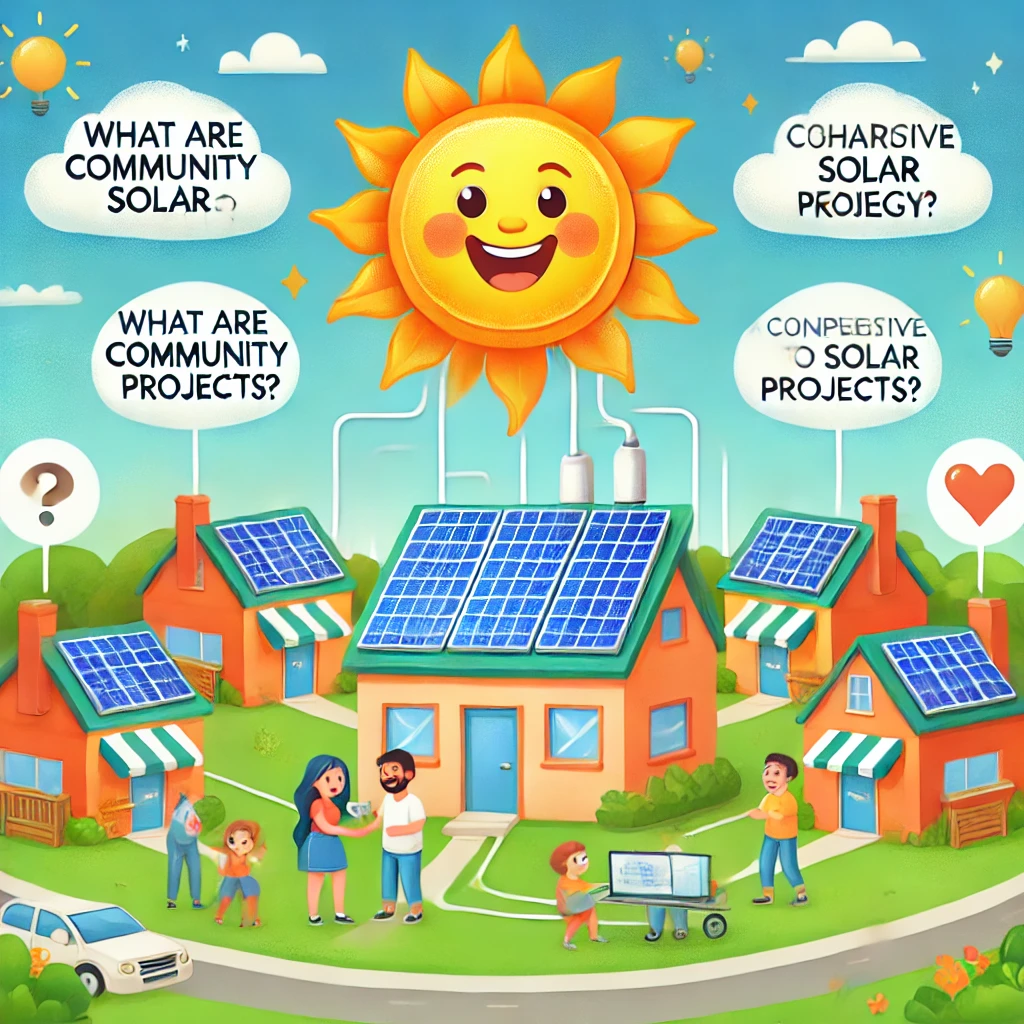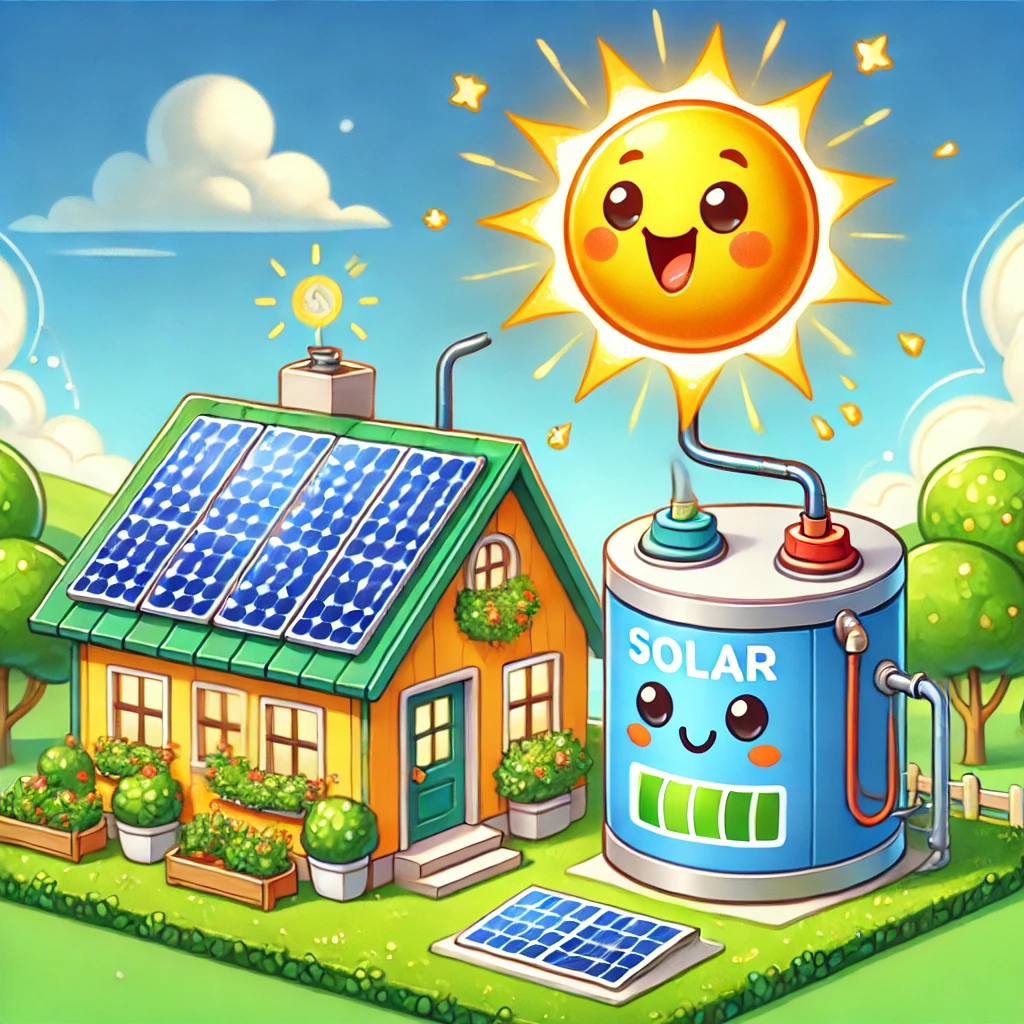As the demand for renewable energy grows, solar power continues to shine as a leading solution. But what if you can’t install solar panels on your property? Whether you’re a renter, live in a shaded area, or simply can’t afford the upfront costs, community solar projects offer an innovative way to tap into the benefits of solar energy. In this guide, we’ll break down everything you need to know about community solar, from how it works to why it’s transforming the way we think about renewable energy.
Understanding Community Solar Projects
Community solar, also referred to as shared solar or solar farms, is a collective approach to solar energy generation. Instead of installing panels on individual rooftops, a large solar array is built in a central location, such as an open field or a commercial rooftop. Multiple participants—homeowners, renters, businesses, or organizations—can then subscribe to or purchase a portion of the energy produced by the array.
This shared model allows people who might not have access to traditional solar installations to benefit from clean energy. The electricity generated by the solar array is fed into the local power grid, and participants receive credits on their utility bills based on their share of the energy produced.
How Community Solar Works: A Step-by-Step Breakdown
Community solar projects operate through a straightforward process that makes solar energy accessible to a broader audience. Here’s how it typically works:
1. Development of the Solar Array
A solar developer or utility company identifies a suitable location and constructs a large-scale solar array. These arrays can vary in size, often producing enough energy to power hundreds or even thousands of homes.
2. Participation Models
There are two primary ways to join a community solar project:
- Subscription Model: Participants pay a monthly fee to access a portion of the solar array’s energy output. This model usually requires no upfront costs and is ideal for those looking for a low-commitment option.
- Ownership Model: Participants buy a share of the solar array, similar to investing in a cooperative. While this may involve higher initial costs, it often leads to greater long-term savings.
3. Energy Generation and Distribution
Once the solar array is operational, it generates electricity that is fed into the local power grid. This clean energy helps reduce the community’s reliance on fossil fuels.
4. Bill Credits
Participants receive bill credits (also called virtual net metering credits) based on their share of the energy produced. These credits are applied to their electricity bills, lowering their overall energy costs.
5. Environmental and Financial Benefits
By participating in a community solar project, you not only save money but also contribute to reducing carbon emissions and promoting renewable energy.
Who Should Consider Community Solar?
Community solar is designed to be inclusive, making it an excellent option for a wide range of individuals and organizations. Here’s who can benefit the most:
1. Renters and Apartment Residents
If you don’t own your home or live in a building where solar installation isn’t feasible, community solar provides a way to access clean energy.
2. Homeowners with Unsuitable Roofs
Factors like shading, roof orientation, or structural limitations can make rooftop solar impractical. Community solar eliminates these obstacles.
3. Budget-Conscious Individuals
The upfront cost of a personal solar system can be a barrier. Community solar often requires little to no initial investment, making it a more affordable option.
4. Businesses and Nonprofits
Companies and organizations can reduce their energy costs and demonstrate their commitment to sustainability by joining a community solar project.
5. Eco-Friendly Advocates
If you’re passionate about reducing your carbon footprint but can’t install solar panels, community solar allows you to support renewable energy initiatives.
Key Benefits of Community Solar
Community solar projects offer numerous advantages, making them an appealing choice for many. Here are some of the standout benefits:
1. Accessibility for All
Community solar opens the door to solar energy for people who might otherwise be excluded, such as renters or those with unsuitable roofs.
2. Cost Savings
Participants typically see a reduction in their electricity bills through bill credits, making solar energy more affordable.
3. No Upfront Costs
Many community solar programs operate on a subscription basis, allowing you to join without a significant initial investment.
4. Environmental Impact
By supporting community solar, you’re helping to reduce greenhouse gas emissions and promote cleaner energy sources.
5. Local Economic Growth
Community solar projects often create jobs and stimulate local economies, from construction to ongoing maintenance.
6. Flexibility
You can start with a small share and increase your participation over time, making it easy to adapt to your budget and energy needs.
Potential Challenges to Keep in Mind
While community solar offers many benefits, there are a few challenges and considerations to be aware of:
1. Geographic Availability
Community solar programs aren’t available everywhere. Their availability depends on local regulations, utility policies, and the presence of solar developers in your area.
2. Variable Savings
The amount you save on your electricity bill can vary based on factors like the size of your share, the project’s location, and local utility rates.
3. Contract Terms
Some programs require long-term commitments, so it’s essential to review the terms and conditions before signing up.
4. Limited Control
Unlike owning your own solar panels, you don’t have control over the maintenance or operation of the solar array.
How to Get Started with Community Solar
Ready to join a community solar project? Here’s a simple guide to help you get started:
- Check Local Availability: Research whether community solar programs are offered in your area. Your utility company or a quick online search can provide this information.
- Compare Programs: Look at different projects and compare their costs, contract terms, and benefits to find the best fit for your needs.
- Sign Up: Once you’ve chosen a program, sign up and start enjoying the benefits of shared solar power.
The Growing Impact of Community Solar
Community solar is rapidly gaining traction as a viable and inclusive way to expand access to renewable energy. According to industry reports, the community solar market is expected to grow significantly in the coming years, driven by increasing demand for clean energy and supportive policies.
As technology advances and more communities embrace shared solar, these projects will play a crucial role in reducing carbon emissions, lowering energy costs, and creating a more sustainable future.
Final Thoughts
Community solar projects are revolutionizing the way we access and benefit from solar energy. By making clean power available to a broader audience, they’re breaking down barriers and empowering individuals, businesses, and communities to take part in the renewable energy movement.
Whether you’re looking to save money, reduce your environmental impact, or simply explore new ways to support clean energy, community solar offers a practical and impactful solution. Take the first step today by researching programs in your area and joining the growing community of solar energy advocates.
Call to Action:
Interested in learning more about solar energy and how it can work for you? Subscribe to our blog for the latest updates, tips, and insights on solar products and renewable energy solutions!
New chat



